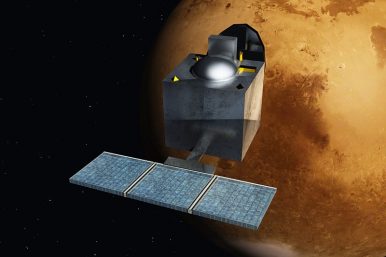By Rajeswari Pillai Rajagopalan
 By all accounts, India’s space program had a stellar 2017. That was capped with its latest launch last Friday of India’s hundredth satellites, along with 30 other satellites, on board its workhorse space rocket: the Polar Satellite Launch Vehicle (PSLV-C40). Almost a year ago, in February 2017, the Indian Space Research Organization (ISRO) had launched 104 satellites on a single PSLV rocket, a world record. Last Friday’s launch included a Cartosat-2 earth observation satellite, along with 30 other micro- and nano-satellites from six different countries. These achievements have been warmly praised by India’s leaders, with Prime Minister Narendra Modi tweeting his congratulations to the ISRO.
By all accounts, India’s space program had a stellar 2017. That was capped with its latest launch last Friday of India’s hundredth satellites, along with 30 other satellites, on board its workhorse space rocket: the Polar Satellite Launch Vehicle (PSLV-C40). Almost a year ago, in February 2017, the Indian Space Research Organization (ISRO) had launched 104 satellites on a single PSLV rocket, a world record. Last Friday’s launch included a Cartosat-2 earth observation satellite, along with 30 other micro- and nano-satellites from six different countries. These achievements have been warmly praised by India’s leaders, with Prime Minister Narendra Modi tweeting his congratulations to the ISRO.The latest launch is a good demonstration of both the reliability of Indian rockets as well as an example of India’s mature satellite fabrication capacities. According to the ISRO, the Cartosat is an earth observation satellite, with a wide variety of cartographic applications including “coastal land use and regulation, utility management like road network monitoring, water distribution, creation of land use maps, change detection to bring out geographical and manmade features and various other Land Information System (LIS) as well as Geographical Information System (GIS) applications.”Enjoying this article? Click here to subscribe for full access. Just $5 a month.
Though the ISRO is coy about it, the Indian press has reported that the Cartosat also has national security applications, especially in watching India’s borders. The security implications have not gone unnoticed by India’s regional rival, Pakistan. Even before the launch took place, Pakistan’s Foreign Ministry spokesperson pointed to the “dual use” nature of space technology and the worried about the impact of the launch on “regional strategic stability.”
It will also, without doubt, spur a regional space race with China, with which India increasingly compares its space program. Not surprisingly, Indo-Japanese cooperation in space technology has also dramatically grown, with the two countries agreeing last year to cooperate on a variety of areas, including “earth observation, satellite based navigation, space sciences and lunar exploration.” Japan and India share a growing concern about China, including about China’s space accomplishments.
While these are impressive achievements, India’s space program faces some challenges. Although the ISRO remains one of the rare public-sector agencies that has done India proud, India needs to augment its policy and program in line with contemporary regional and global developments in the space domain.
The first challenge that India faces is the lack of a comprehensive space policy. As of now, there are sector-specific policies for remote sensing and Satcom. While these are essential to catering to the needs of specific customers, the need for a holistic approach to space is gaining greater momentum. India’s leaders must think about developing a comprehensive, overarching space policy, issued by a central agency such as the Prime Minister’s Office or the Ministry of External Affairs.
Today, space is not about weather prediction, DTH services, tele-education and tele-medicine alone, but also about the growing number of uses in the national security sector. Ignoring the growing requirements in the security domain can be detrimental to India’s strategic interests. India’s overarching space policy should also be the by-product of a larger national security strategy approach that would outline what kind of future warfare India expects to fight and the kind of space capabilities that may be required for such wars. Such an exercise is best undertaken by the political leadership than a sector-specific department. A policy developed in the absence of such a strategic interface could be seriously problematic.
The second challenge is finding a strategy to enhance India’s space capacity. While the ISRO has begun acknowledging the new reality that there are growing demands from a variety of sectors for space services, the problem lies in the capacity to deliver in a timely manner. ISRO has begun co-opting private players to meet these growing demands. While a few companies other than the traditional players such as Larsen & Tubro and Godrej are entering the domain, the Department of Space could make the outreach to commercial entities in a more coherent fashion through a comprehensive policy framework.
The third challenge India faces is how to deal with the growing demands for an international space regime. India must be mindful of the efforts at developing an effective outer space regime as it frames its own national space policy. The growing number of problems, including space debris, the potential weaponization of space, as well as deployment of anti-satellite weapons, require concerted multilateral action. India has yet to decide how to frame its national interests in outer space in a way that both promotes its own national requirements but also global needs. India has an opportunity to take the lead on this, lest it face the alternative of having others determine these rules.
0 Response to "What’s Next for India’s Space Program?"
Post a Comment